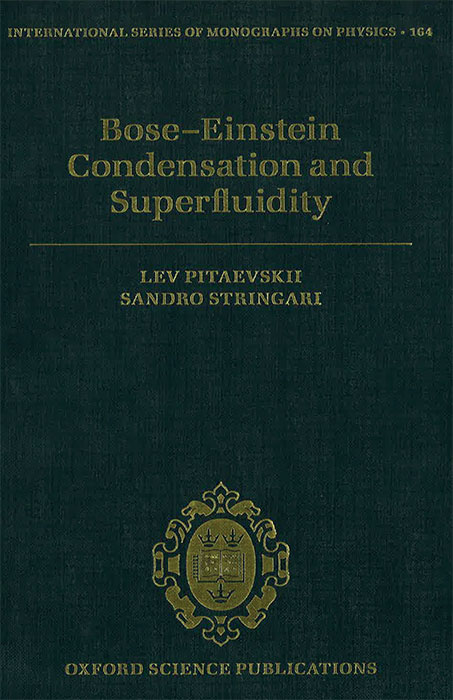By L Pitaevskii and S Stringari
Oxford University Press

This book deals with the fascinating topics of Bose–Einstein condensation (BEC) and superfluidity. The main emphasis is on providing the formalism to describe these phases of matter as observed in the laboratory. This is far from the idealised studies that originally predicted BEC and are essential to interpret the experimental observations.
BEC was predicted in 1925 by Einstein, based on the ideas of Satyendra Nath Bose. It corresponds to a new phase of matter where bosons accumulate at the lowest energy level and develop coherent quantum properties at a macroscopic scale. These properties may correspond to phenomena that seem impossible from an everyday perspective. In particular, BEC lies behind the theory of superfluids, which are fluids that flow without dissipating energy and rotate without generating vorticity – if we except quantised vortices, which are a sort of topological defect.
Experimentally, the first BEC from dilute gases was observed in the laboratory in 1995, recognised by the 2001 Nobel Prize in Physics. Since then, there has been an explosion of interest and new results in the field. It is thus timely that two of its leading experts have updated and extended their volume on BEC to summarise the theoretical aspects of this phase of matter. The authors also describe in detail how superfluid phenomena can occur for Fermi gases in the presence of interactions.
The book is relatively heavy in formalism, which is justified by the wide range of phenomena covered in a relatively concise volume. It starts with some basics about correlation functions, condensation and statistical mechanics. Next, it delves into the simplest systems for which BEC can occur: weakly coupled dilute gases of bosonic particles. The authors describe different approaches to the BEC phase, including the works of Landau and Bogoliubov. They also introduce the Gross–Pitaevskii equation and show its importance in the description of superfluids. Superfluidity is explained in great detail, in particular the occurrence of quantised vortices.
The second part describes how to adapt the theoretical formalism introduced in the first part to realistic traps where BEC is observed. This is very important to connect theoretical descriptions to laboratory research, for instance to predict in which experimental configurations a BEC will appear and how to characterise it.
Part three deals with BEC in fermionic systems, which is possible if the fermions interact and pair-up into bosonic structures. These fermionic phases exhibit superfluid properties and have been created in the laboratory, and the authors consider fermionic condensates in realistic traps. The final part is devoted to new phenomena appearing in mixed bosonic–fermionic systems.
The book is a good resource for the theoretical description of BEC beyond the idealised configurations that are described in many texts. The concise style and large amount of notation requires constant effort from the reader, but seems inevitable to explain many of the surprising phenomena appearing in BECs. The book, perhaps combined with others, will provide the reader with a clear overview of the topic and latest theoretical developments in the field. The text is enhanced by the many figures and plots presenting experimental data.








